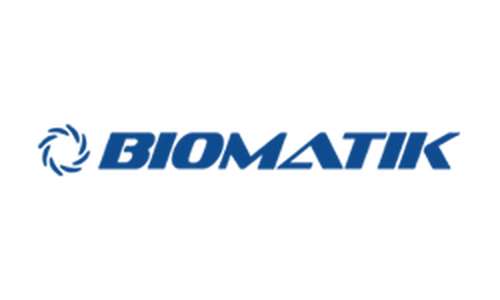Product Description
Recombinant Human Glutaredoxin-2, mitochondrial (GLRX2) is available at Gentaur for Next week Delivery.
Gene Name: GLRX2
Alternative Names :
Expression Region : 1-124aa
AA Sequence : MESNTSSSLENLATAPVNQIQETISDNCVVIFSKTSCSYCTMAKKLFHDMNVNYKVVELDLLEYGNQFQDALYKMTGERTVPRIFVNGTFIGGATDTHRLHKEGKLLPLVHQCYLKKSKRKEFQ
Sequence Info : Full Length of BC028113
Tag Info : N-terminal GST-tagged
Theoretical MW : 41.1 kDa
Storage Buffer : Tris/PBS-based buffer, 5%-50% glycerol. If the delivery form is lyophilized powder, the buffer before lyophilization is Tris/PBS-based buffer, 6% Trehalose, pH 8.0.
Endotoxin Level : Not tested-
Biological Activity : Not tested
Storage : Short term: -20°C; Long term: -80°C. Minimize freeze and thaw cycles.
Research Area : Signal Transduction
Restriction : For Research Use Only. Not for use in diagnostic procedures, drug use, or for administration to humans or animals.
Relevance : Glutathione-dependent oxidoreductase that facilitates the maintenance of mitochondrial redox homeostasis upon induction of apoptosis by oxidative stress. Involved in response to hydrogen peroxide and regulation of apoptosis caused by oxidative stress. Acts as a very efficient catalyst of monothiol reactions because of its high affinity for protein glutathione-mixed disulfides. Can receive electrons not only from glutathione (GSH), but also from thioredoxin reductase supporting both monothiol and dithiol reactions. Efficiently catalyzes both glutathionylation and deglutathionylation of mitochondrial complex I, which in turn regulates the superoxide production by the complex. Overexpression decreases the susceptibility to apoptosis and prevents loss of cardiolipin and cytochrome c release.
Function : Glutathione-dependent oxidoreductase that facilitates the maintenance of mitochondrial redox homeostasis upon induction of apoptosis by oxidative stress. Involved in response to hydrogen peroxide and regulation of apoptosis caused by oxidative stress. Acts as a very efficient catalyst of monothiol reactions because of its high affinity for protein glutathione-mixed disulfides. Can receive electrons not only from glutathione (GSH), but also from thioredoxin reductase supporting both monothiol and dithiol reactions. Efficiently catalyzes both glutathionylation and deglutathionylation of mitochondrial complex I, which in turn regulates the superoxide production by the complex. Overexpression decreases the susceptibility to apoptosis and prevents loss of cardiolipin and cytochrome c release.
Involvement in disease :
Subcellular location : Isoform 1: Mitochondrion, SUBCELLULAR LOCATION: Isoform 2: Nucleus
Protein Families : Glutaredoxin family
Tissue Specificity : Widely expressed. Expressed in brain, heart, skeletal muscle, colon, thymus, spleen, kidney, liver, small intestine, placenta and lung. Not expressed in peripheral blood leukocytes.
Paythway :
Uniprot ID : Q9NS18
 Euro
Euro
 British Pound
British Pound
 US Dollar
US Dollar












